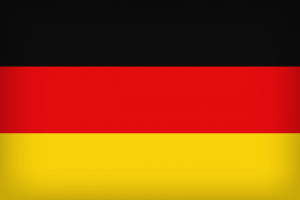Language/German/Grammar/Gender-and-Articles
 Հայերէն
Հայերէն Български език
Български език 官话
官话 官話
官話 Hrvatski jezik
Hrvatski jezik Český jazyk
Český jazyk Nederlands
Nederlands English
English Suomen kieli
Suomen kieli Français
Français עברית
עברית हिन्दी
हिन्दी Magyar
Magyar Bahasa Indonesia
Bahasa Indonesia فارسی
فارسی Italiano
Italiano 日本語
日本語 Қазақ тілі
Қазақ тілі 한국어
한국어 Lietuvių kalba
Lietuvių kalba Νέα Ελληνικά
Νέα Ελληνικά Şimali Azərbaycanlılar
Şimali Azərbaycanlılar Język polski
Język polski Português
Português Limba Română
Limba Română Русский язык
Русский язык Српски
Српски Español
Español العربية القياسية
العربية القياسية Svenska
Svenska Wikang Tagalog
Wikang Tagalog தமிழ்
தமிழ் ภาษาไทย
ภาษาไทย Türkçe
Türkçe Українська мова
Українська мова Urdu
Urdu Tiếng Việt
Tiếng ViệtAs a German language teacher with 20 years of experience, I'm here to help you with the next step in learning German grammar. In this lesson, we will cover the use of definite and indefinite articles according to noun gender.
Don't miss the chance to check out these pages as you wrap up this lesson: Gender & Personal Pronouns.
Introduction
In German, gender plays an important role in the use of articles. German has three genders: masculine, feminine, and neuter. It's important to learn the gender of a noun in order to use the correct article. The gender of a German noun can be identified by looking at the article that precedes it. In this lesson, we will focus on the gender articles that are used in German grammar.
Definite Articles
Definite articles are used to refer to specific nouns. In German, there are four definite articles: "der" (masculine), "die" (feminine), "das" (neuter), and "die" (plural). The definite article also changes depending on the case being used (nominative, accusative, dative, or genitive). For example:
| German | Pronunciation | English |
|---|---|---|
| der Hund | dɛɐ hʊnt | the dog (masculine) |
| die Katze | diː kat͡sə | the cat (feminine) |
| das Haus | das haʊs | the house (neuter) |
Indefinite Articles
Indefinite articles refer to an unspecified noun. In German, there are also four indefinite articles: "ein" (masculine and neuter), "eine" (feminine), and "kein" (negative form). As with definite articles, the gender of the noun determines which indefinite article to use.
| German | Pronunciation | English |
|---|---|---|
| ein Hund | a dog (masculine) | |
| eine Katze | əɪnə kat͡sə | a cat (feminine) |
| ein Haus | a house (neuter) | |
| kein Buch | kaɪn buːx | no book (masculine) |
Exceptions to the Rule
There are a few exceptions to the gender rule in German. For example, words ending with "-chen" or "-lein" are always neuter, while words ending in "-e" can be either feminine or masculine. It's important to memorize these exceptions as you learn new vocabulary.
Tips for Learning German Gender Articles
Learning gender articles can be challenging, but there are ways to make it easier. Here are a few tips:
- Learn the gender article as you learn new vocabulary.
- Look for patterns in gender articles.
- Practice gender articles by forming sentences with the nouns you learn.
- Use flashcards to memorize gender articles.
Conclusion
In this lesson, we covered the use of definite and indefinite articles according to noun gender in German. Remember, learning the gender of a German noun is essential in using the correct article. Keep practicing and you'll soon become a master of gender articles in German grammar.
Sources
- Grammatical gender in German - Wikipedia
- A Quick Guide to German Grammatical Gender: Der, Die, Das
- How to Remember German Gender Rules
Congratulations on finishing this lesson! Explore these related pages to keep learning: Plurals & Negation.
Videos
Gender and number of German nouns (5-Minute German Grammar ...
Easy German Grammar: Nouns, Genders, and Articles - YouTube
Other Lessons
- Cases
- Nouns
- Plural Forms
- Adjectives
- Past Tense
- Temporal Prepositions
- Questions
- Noun and Gender
- Subject and Verb

